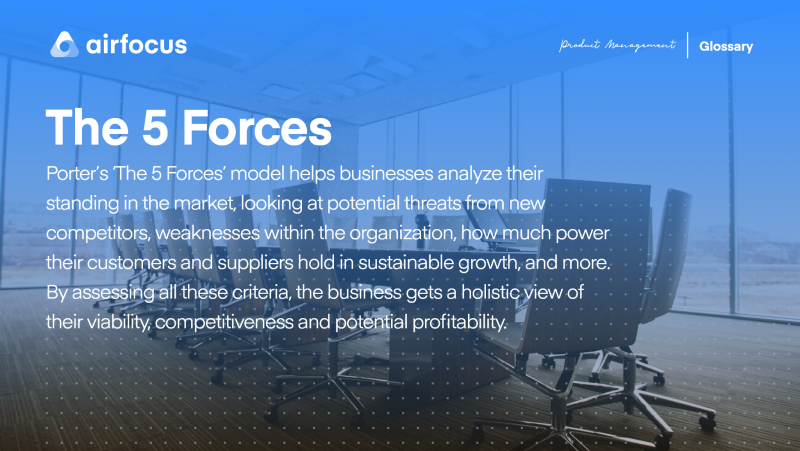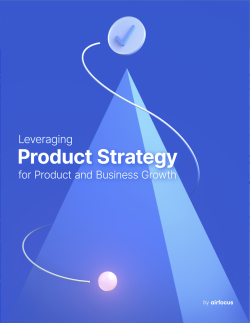The 5 Forces
What are the 5 forces?
Definition of the 5 forces
Porter’s "the 5 forces" model helps businesses analyze their standing in the market, looking at potential threats from new competitors, weaknesses within the organization, how much power their customers and suppliers hold in sustainable growth, and more. By assessing all these criteria, the business gets a holistic view of its viability, competitiveness, and potential profitability.
The 5 forces model was primarily developed as a competitive strategy analysis tool, giving businesses and analysts alike the ability to evaluate the competitive landscape within a specific sector. The more intense the competition within an industry, the more attractive — and thus more profitable — it could be.
So those are the basics, but what are the 5 forces?
Threat of new entrants. It’s only natural that profitable industries will attract new competitors to the market, which, over time, actually dilutes the overall profitability of an industry while increasing competitive rivalry.
Threat of substitutes. This refers to the concept of a different product or service solving the same user problem. For example, meat-free alternative foods, self-driving cars vs. public transport, and so on.
Bargaining power of customers. If customers have lots of different options to choose from in an industry, they’re said to have a lot of bargaining power. This can impact a customer’s price-sensitivity and create additional pressure for a business.
Bargaining power of suppliers. If a business has very few options when it comes to suppliers, the power of those suppliers goes up. Whether it’s raw materials, labor, or services, the more companies in an industry, the greater market power suppliers will wield.
Competitive rivalry. This factor refers to the intensity of competitor rivalries within the industry. Positioning products optimally requires a deep understanding of competitor practices, including pricing and marketing strategies.
Who created the 5 forces model?
The 5 forces framework was first posited by Michael Porter, a Harvard Business School professor, way back in 1979. The model was announced as part of an article in the Harvard Business Review titled How Competitive Forces Shape Strategy.
Since then, Porter’s 5 forces have gone on to influence countless business people, corporate strategists, and academics. Thanks to the robust definitions, and the focus on permanent criteria (such as customer and supplier relationships), the framework remains one of the go-to analytical models for the assessment of competitive landscapes.
Applying the 5 forces to your business
The 5 forces model is most commonly used as a starting point for business strategy consultants when assessing a company’s position in the market.
Porter points out that the 5 forces methodology should be applied at the highest level of an industry — the line-of-business. He also recommends that any business operating within a single industry should carry out at least one 5 forces analysis. This is done by going through each of the 5 forces in order and applying them to the business in question. Applying the 5 forces may involve asking questions such as:
Who are the dominant firms in this industry?
How many suppliers operate in this market?
Are buyers price-sensitive? Are they brand-loyal?
And crucially, what evidence do you have to back each of these answers up?
By breaking each of the 5 forces into actionable questions, you’ll be able to efficiently carry out the analysis for your business and establish a solid view of competitive rivalry in your industry.

General FAQ

Glossary categories
Create effective product strategy

Experience the new way of doing product management







